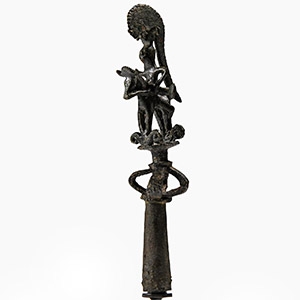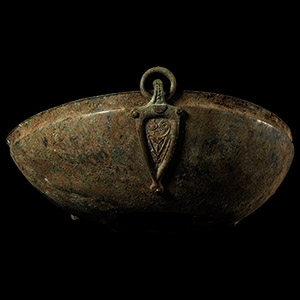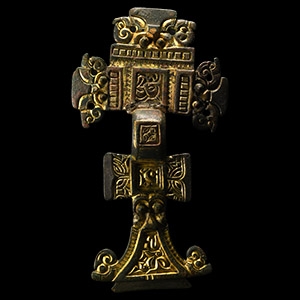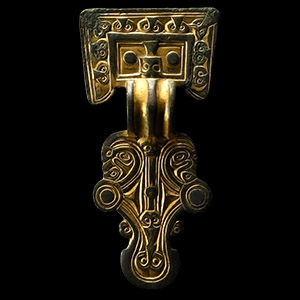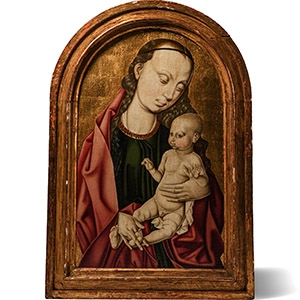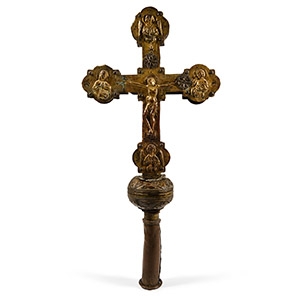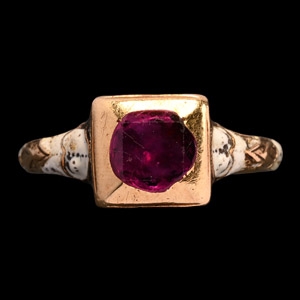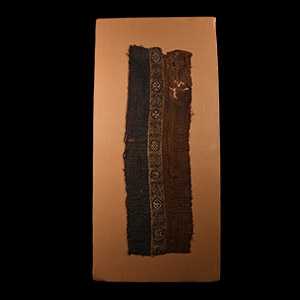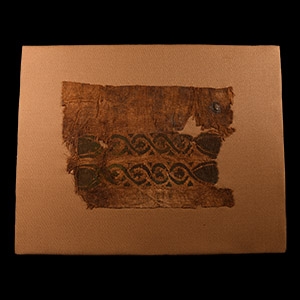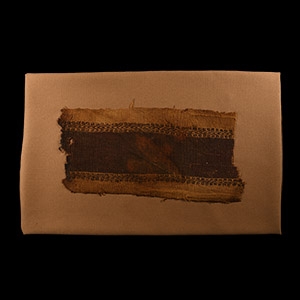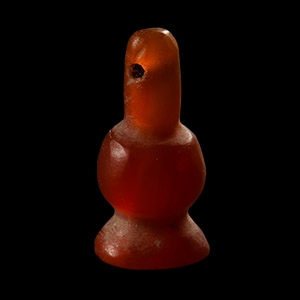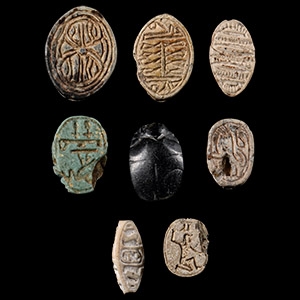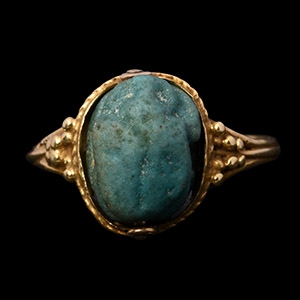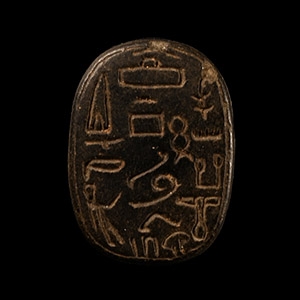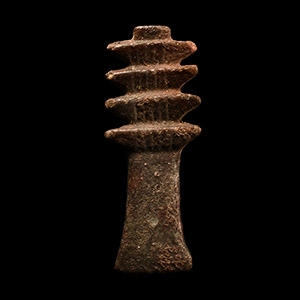Home > Auctions > 5 - 9 September 2023
Ancient Art, Antiquities, Natural History & Coins
Auction Highlights:
Acquired 1970s-1996.
Property of a North American collector.
London collection, 2016.
Cf. Gayet, M. Al., Le Costume en Egypte, du IIIe au XIIIe Siecle, Paris, 1900, nos. 285, p.302, for similar style of textile.
Yellow wool and linen. In this period, when Egypt passed from Roman to Arabian rule, the garments were still conspicuously decorated with stylised foliage, arabesques and meanders, geometric figures, often made in yellow or white wool over a linen background.
Acquired 1970s-1996.
Property of a North American collector.
London collection, 2016.
Cf. Pritchard, F., Clothing Culture: Dress in Egypt in the First Millennium AD, Manchester, 2006, p.62, fig.4.12, for similar segmenta.
The textile shows a pair of segmenta, probably from a sleeve of a linen tunic. The wool here seems to be Z-spun, a spin direction not very common in Roman Egypt and suggesting that the spun yarn may have been traded from another province of the empire. Frequently, like in our case, the wool is purple in hue.
Acquired 1970s-1996.
Property of a North American collector.
London collection, 2016.
See Andrews, C., Amulets of Ancient Egypt, London, 1994, for discussion.
Acquired 1970s-1996.
Property of a North American collector.
London collection, 2016.
Cf. Wulff, O. & W.F. Volbach, Spätantike und koptische Stoffe aus ägyptischen Grabfunden in den Staatlichen Museen Kaiser-Friedrich-Museum / Ägyptisches Museum Schliemann-Sammlung, Berlin, 1926, no.9676, p.96, for similar textile.
Tapestry technique on natural linen. It is highly probable that this tapestry was part of a long decorated tunic, a clavus running vertically on the breast and on the back of it, and having a parallel clavus on the other side. Tunic decoration conformed to a specific layout with the back mirroring the front. Matching bands called clavi ran on either side of the neck. They could be full length, like our specimen, or stop above the waistline.
Acquired 1970s-1996.
Property of a North American collector.
London collection, 2016.
Cf. Wulff, O. & Volbach, W.F., Spätantike und koptische Stoffe aus ägyptischen Grabfunden in den Staatlichen Museen Kaiser-Friedrich-Museum / Ägyptisches Museum Schliemann-Sammlung, Berlin, 1926, no.9662, p.55, for similar textile.
Cloaks and mantles were the main type of outer garments worn by men in late antiquity. They are mentioned in the sources under a variety of names: birrus, caracallus,cucullus, lacerna, sagum, paenula and paludamentum. Unfortunately, despite the fact that cloaks were such important garments they are preserved in far fewer numbers from burials in Egypt than tunics, except as fragments.
UK gallery, early 2000s.
Cf. The Metropolitan Museum, New York, accession number 40.9.26, for similar.
Acquired 1970s-1996.
Property of a North American collector.
London collection, 2016.
Cf. Andrews, C., Amulets of Ancient Egypt, London, 1994, pl.44.
From a family collection formed 1900-1950; by descent circa 1980.
Cf. Chadour, A.B., Rings. The Alice and Louis Koch Collection, volume I, Leeds, 1994, items 39-42, for type.
Acquired 1970s-1996.
Property of a North American collector.
London collection, 2016.
Cf. Del Francia Barocas, L., Museo dell'Alto Medioevo, Roma, I materiali Copti, p.162-163, nos.39 A-B, for similar textile figures and warp.
Tapestry technique on natural light yellow wool upon linen. It is highly probable that this tapestry was part of a tunic decoration, a clavus, running vertically on the breast and on the back of it.
From an early 20th century collection, Carnavon, North Wales, UK.
Acquired 1970s-1996.
Property of a North American collector.
London collection, 2016.
Cf. Andrews, C., Amulets of Ancient Egypt, London, 1994, pl.55(c).
From an early 20th century collection, Carnavon, North Wales, UK.
Associated with the god Osiris.
289 - 300 of 2453 LOTS

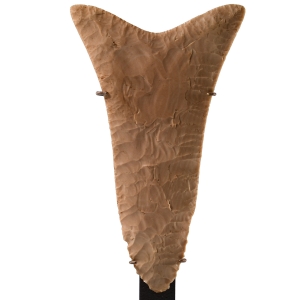
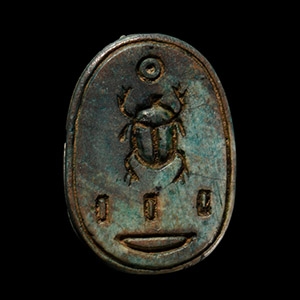
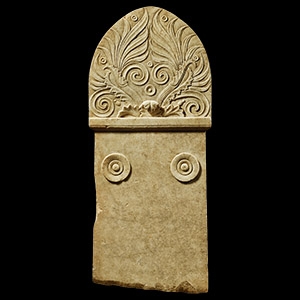
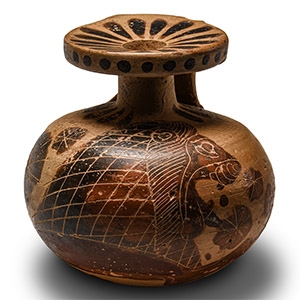
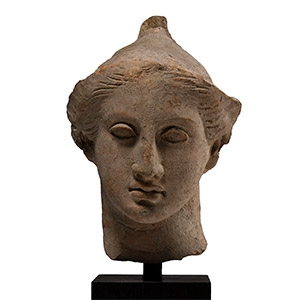
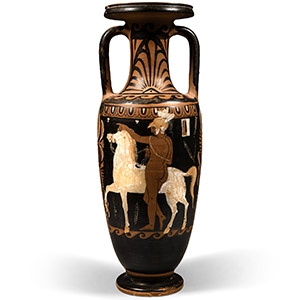
.jpg)
.jpg)
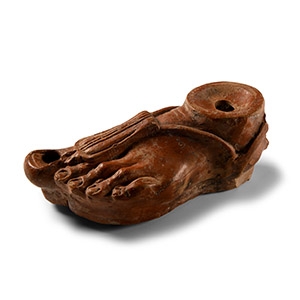
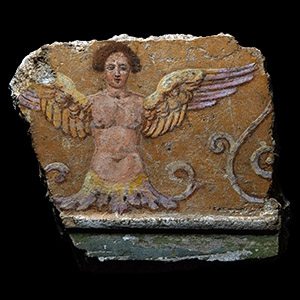
.jpg)
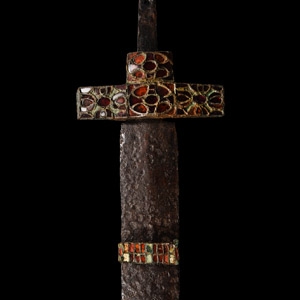
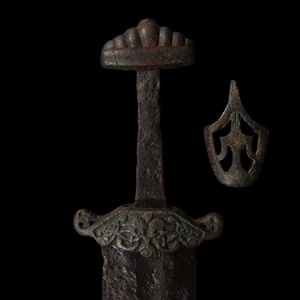
.jpg)
